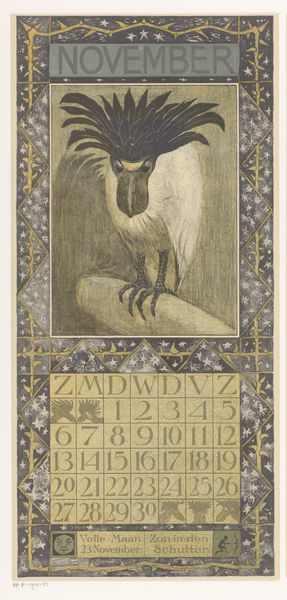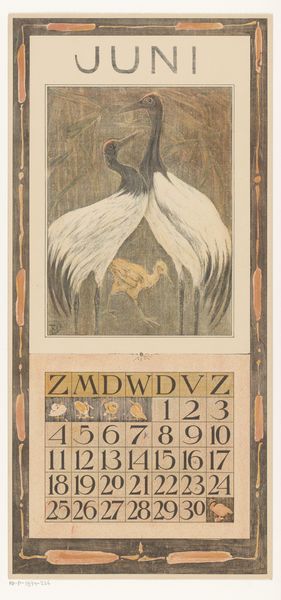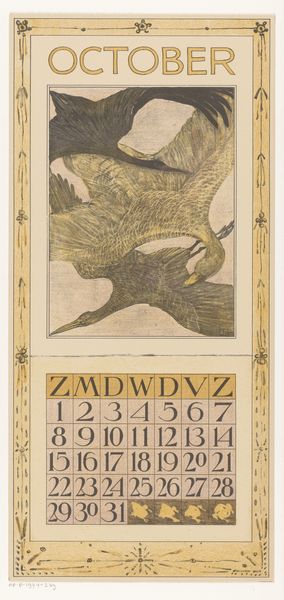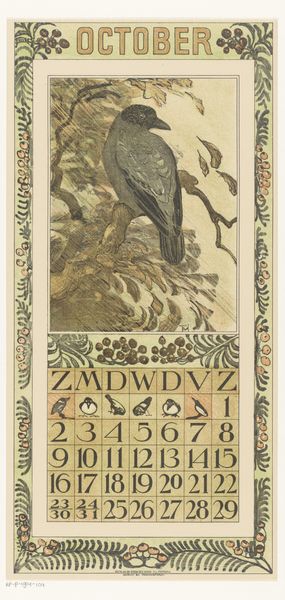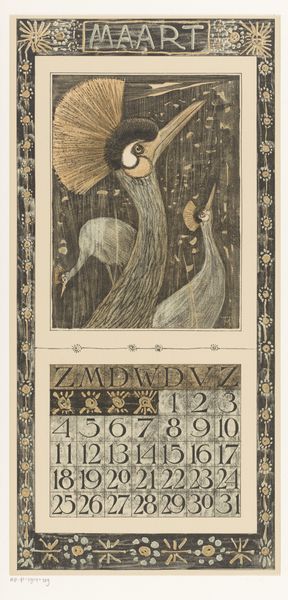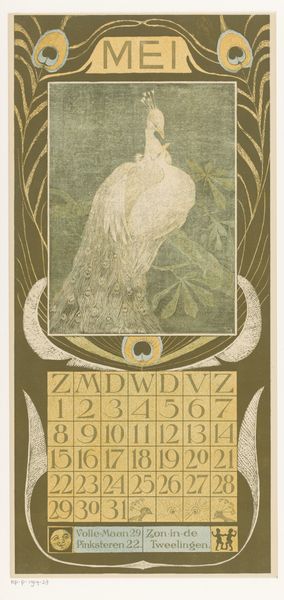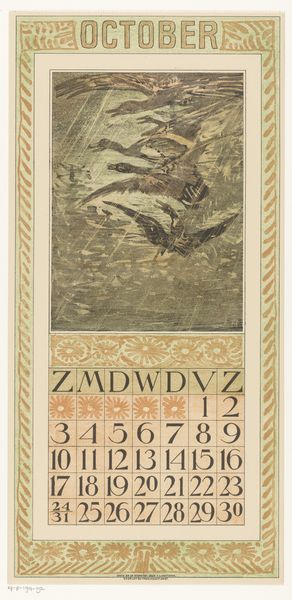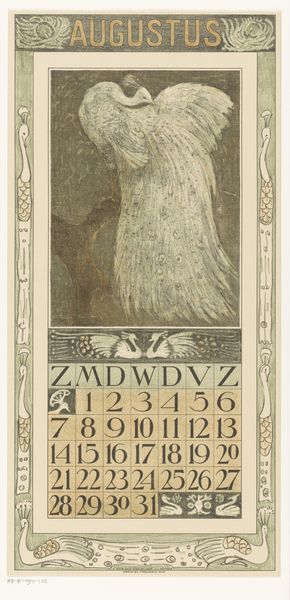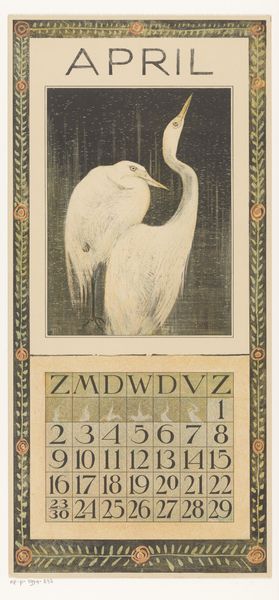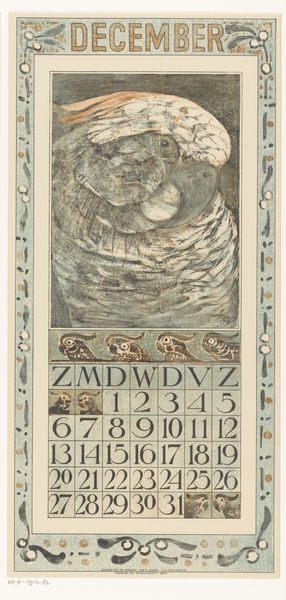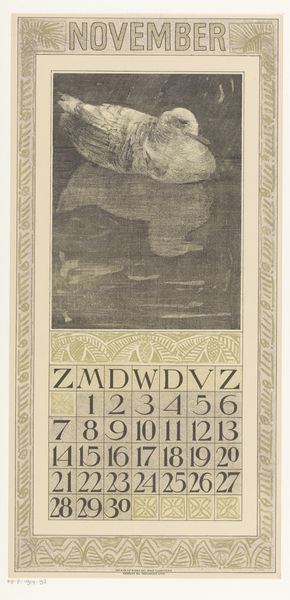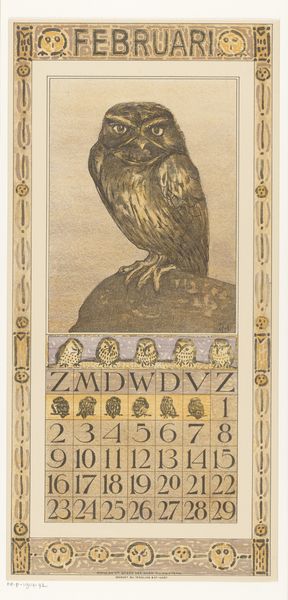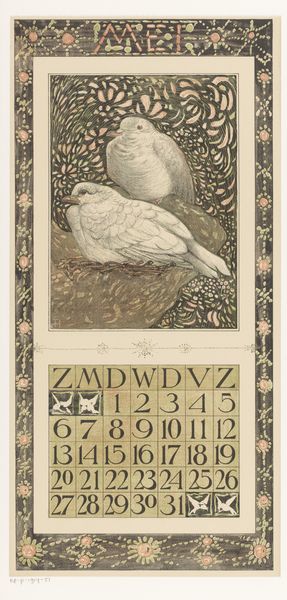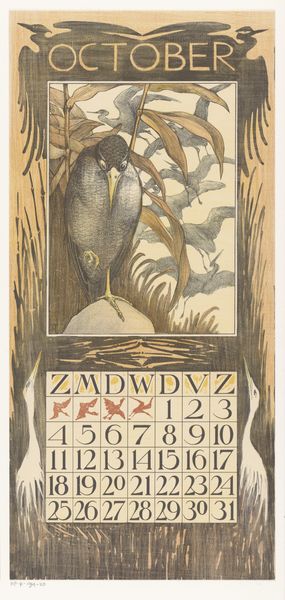
graphic-art, lithograph, print, paper, typography
#
graphic-art
#
art-nouveau
#
lithograph
# print
#
paper
#
typography
#
line
#
watercolour illustration
#
watercolor
Dimensions: height 440 mm, width 210 mm
Copyright: Rijks Museum: Open Domain
Curator: Looking at Theo van Hoytema's "Kalenderblad september met twee vogels" from 1907, currently held at the Rijksmuseum. The blend of drawing and print, using watercolour on paper, makes this piece particularly interesting to me from a material perspective. How does it strike you at first glance? Editor: It’s oddly serene, isn't it? The birds loom with an almost unsettling calmness. It feels like autumn's gentle creep, but there's an awareness there. Like those birds are observing everything. Curator: I'm interested in the context of this work, it being a calendar page elevated to a work of art. It seems to challenge the typical function and perceived value, given the era’s distinctions between craft and fine art, not to mention Hoytema’s exploration of Japonisme evident in the composition. Do you get a sense of this when considering the visual and artistic intention? Editor: Definitely. There's an Eastern minimalism playing against a folk-art charm. The lines are simplified, the colors muted – yet the emotional weight is substantial. That large bird’s stare really locks you in; it is an unconventional design for something intended as a calendar page. Curator: Yes, considering that this piece was designed for mass production and consumption as part of a calendar, its execution involving watercolour print hints at the blurring of lines between industrial reproduction and individual artistic input, doesn't it? It elevates what was probably a simple everyday tool into an artwork. Editor: Precisely. The artist elevates it with these symbolic avian figures. I'm really drawn to the use of birds throughout as subtle markers within the calendar itself, indicating particular days. Each little feathered friend marks a unique space in time. There is a playfulness here that feels very considered. Curator: It certainly demonstrates how ordinary objects can transcend their utilitarian purpose, if given artistic consideration. And from a craft and labor perspective, consider the labour to mass produce while holding onto such quality. It reflects a broader social landscape of valuing material culture and labor. Editor: Yes, ultimately, it's more than just a page ripped from a calendar, it’s an enduring capture of September’s slow and knowing entry. I’m quite glad that this piece from Theo van Hoytema lives on today.
Comments
No comments
Be the first to comment and join the conversation on the ultimate creative platform.
